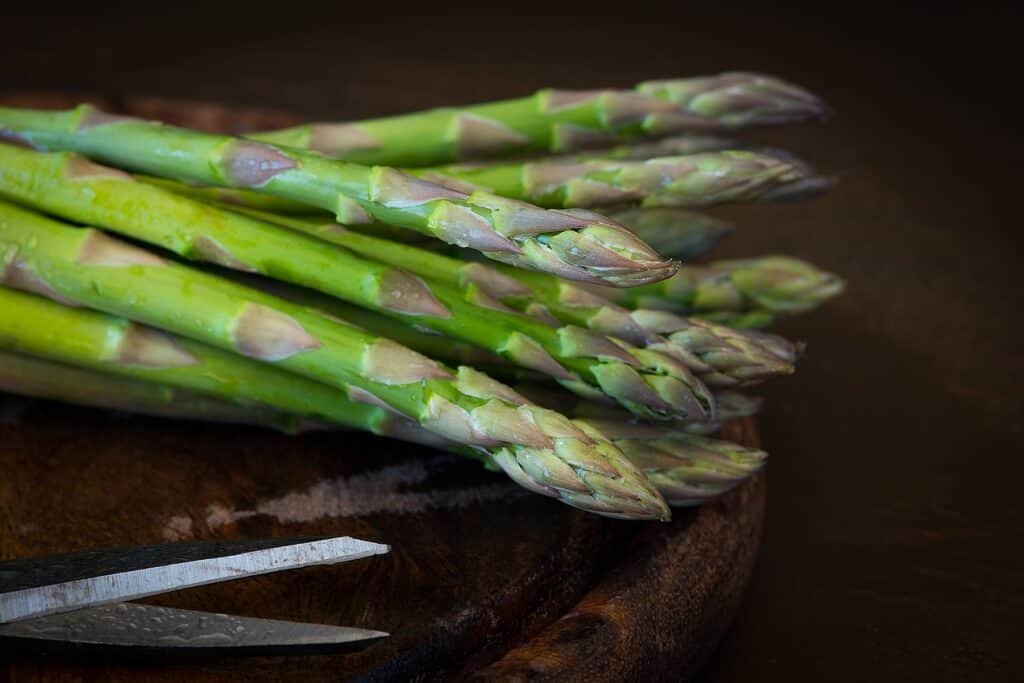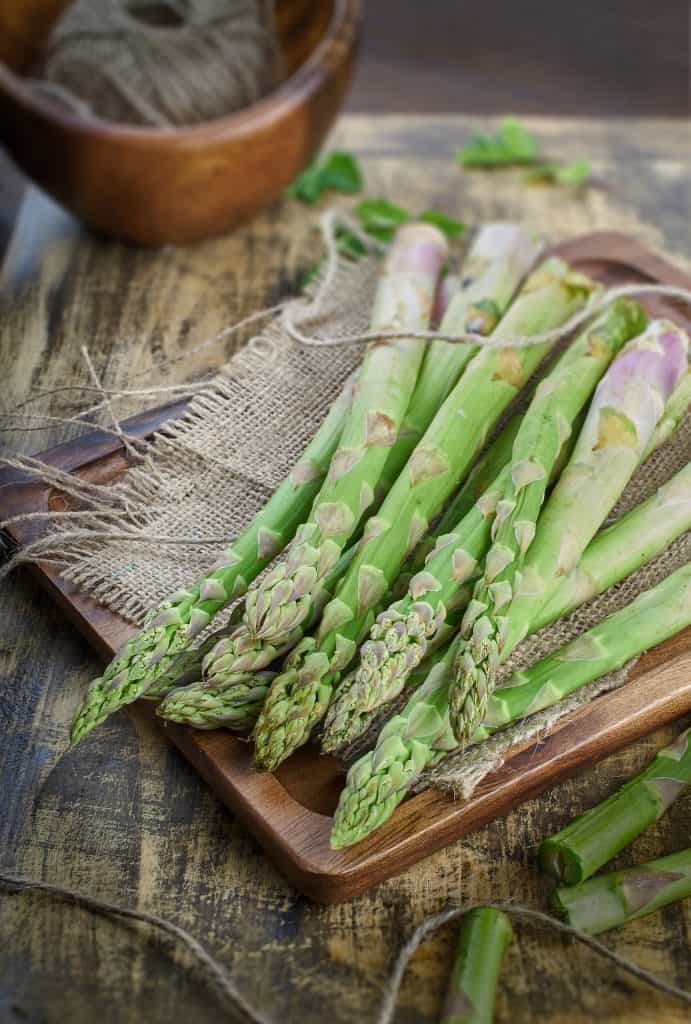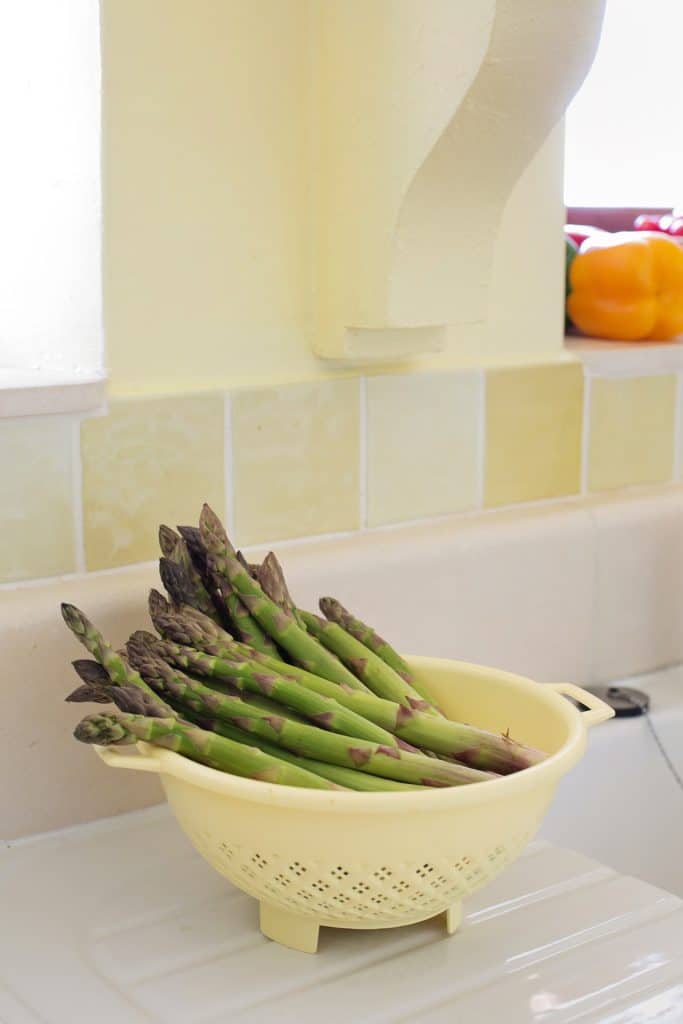As an Amazon Associate we earn from qualifying purchases.
I love asparagus, and it is one of my go-to vegetables to pair with chicken or beef. I think there’s just something about asparagus that makes it a little fancier than your everyday vegetable like green beans or peas.
Growing up though, I hated them; however, it wasn’t until much later in life that I realized I didn’t actually hate asparagus. I hated overcooked asparagus! So in today’s I’ll be talking about how to cook your asparagus quickly without overcooking it.
Quick Navigation
How to Cook Asparagus Quickly
I recommend cooking asparagus quickly for all methods EXCEPT sous vide. This is because asparagus breaks down in freshness, color, and texture quickly making for poor eating when overcooked. Just like broccoli and squash, asparagus can be ruined with too much heat, time, or liquid.

Here are the 6 conventional ways to quickly cook asparagus:
- Pan Roasted
- Steamed
- Boiled
- Roasted
- Grilled
- Microwaved
Pan Roasted Asparagus
This is my preferred way at home to cook asparagus, as it is extremely fast and easy to do. It takes less than 5 minutes in total. Here are the steps:
- Heat a pan on medium high heat.
- Add some olive oil, asparagus, salt, pepper, garlic and cook for 2 minutes.
- Add lemon juice and cook for 1 more minute.
Steamed Asparagus
One of the most common ways to cook asparagus is to steam it. Get your steamer up to temp, and then just 3-5 minutes in the basket is all you need.
Boiled Asparagus
Probably the second most common way to cook asparagus is to boil it. This method is really great for “raw” presentations like salads. Once your water is boiled, it takes less than 3 minutes for the rest of the process.
- Bring salted water up to boiling temperature.
- Place asparagus in the boiled water for 1-2 minutes.
- Blanch by placing in ice water directly after the boiled water for the crispest, greenes, freshest asparagus flavor.

Roasted Asparagus
Asparagus is not the most ideal roasting vegetable in my opinion, but if you need to make a lot of asparagus then this is definitely the way to go. This method is still quick (but takes the longest out of the options I’ve shared).
- Heat your oven up to 450°F
- Rub the asparagus down with olive oil, salt, pepper, and any other seasoning you’d like.
- Bake for about 10 minutes (or 7 minutes for thinner asparagus).
Grilled Asparagus
Asparagus makes a great side for steaks and chicken, so it is only natural that I’d want it grilled as well. You can wrap the asparagus in tin foil with some salt, garlic, and lemon juice or you can put it directly on the slats with some olive oil, salt, and pepper.
Either way, you are looking at about 5 minutes of cook time (so start the asparagus just as you are taking the meat off the grill and resting it).
Microwaved Asparagus
Microwaves are a great and quick way to cook asparagus, which might come as a bit of a surprise. Microwaves are very interesting pieces of technology – they vibrate water molecules in your food to heat them from the inside out (though, this is the inside of the cells, not necessarily the inside of your food).
This means microwaves effectively boil the inside of your asparagus. What you want to be careful of is overcooking them. Remember, too long at boiling or steaming temperature will leave asparagus limp and tasteless.
- Roll your asparagus in some damp paper towels with a bit of salt and a lemon slice.
- Microwave on high for 3 minutes and enjoy.
How Do I Know When Asparagus is Done Cooking?
Asparagus is done cooking very quickly, normally taking only 3-5 minutes. You will know asparagus is done cooking when it is tender (not soft) and bright green. If the color begins fading towards dull green or brown or if the asparagus is soft, it is overcooked.

Is it Better to Boil or Steam Asparagus?
For quick cooked asparagus, boiling is the way to go. The max temperature of the steam vs. boiling water is the same (212°F / 100°C). The major difference is in heat conduction and capacity.
There is far more heat capacity and better heat conduction in a large mass of boiling water than in steam (reminder: air is an awful conductor of heat). This means asparagus cooks faster in boiling water.
Either way you go, I do recommend blanching or immediately running under cold water after boiling or steaming to prevent overcooking and locking in that bright green color.
Do You Need to Peel Asparagus Before Cooking?
You do not need to peel asparagus before cooking. In general, it is more important to buy younger, thinner, ripe asparagus. If your asparagus is hard in the roots, cut the bottom inch or two off.
Start with good sourcing and selection, and there should not be any reason you need to peel the asparagus outside of aesthetics for a specific presentation. If all the asparagus in your area is older, dried out, and trimming doesn’t work, then you can give peeling a go.
Can You Sous Vide Asparagus?
Yes, you absolutely can sous vide asparagus. The only caveat here is it takes longer compared to conventional methods of cooking. The reason sous vide asparagus can be left at temperature for so long as you are not overcooking it.
If you apply low heat to asparagus slowly it will not rupture the cell walls, keeping your food green and crisp rather than brown and soggy. The general consensus is that 180°F is ideal for using sous vide for asparagus.

